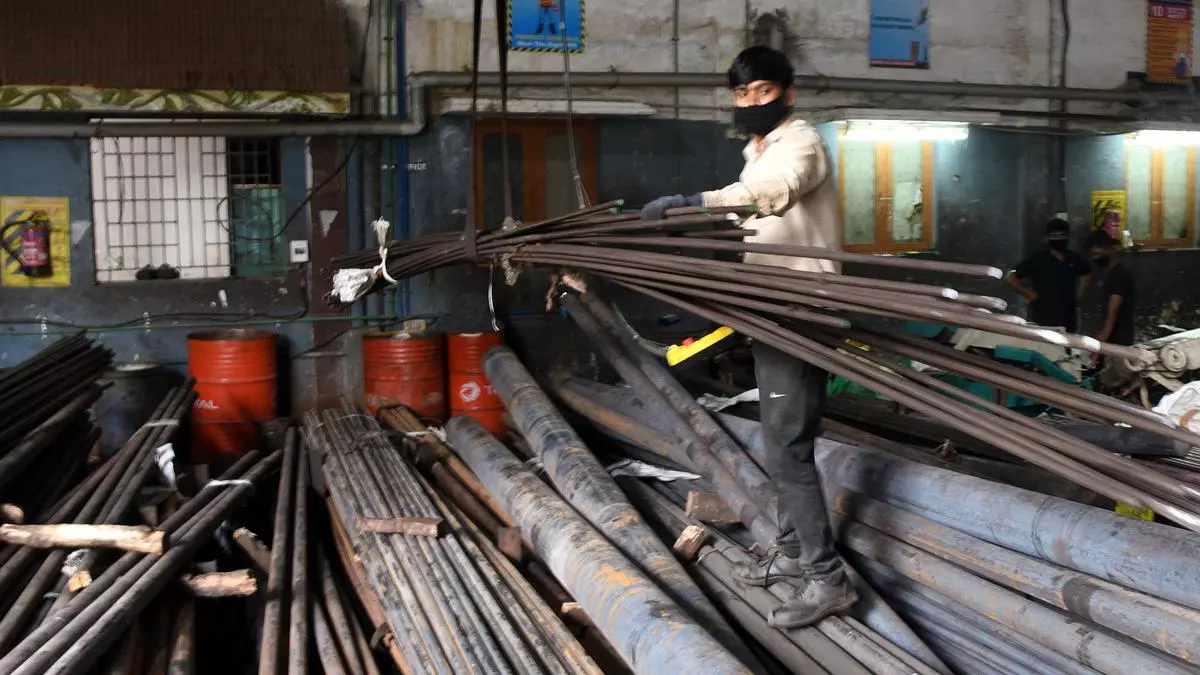
Advances to micro, small and medium enterprises (MSMEs) are increasing at a good pace as banks become liberal in granting loans.
Data for the fourth quarter ended March 31, 2022 as well as FY22 show an increase in MSME advances compared to the previous year, which was hit by the uncertainties of the Covid-19 pandemic.
An analysis of data from the last two years from the Reserve Bank of India shows a huge increase in lending to MSMEs. Micro and small loans outstanding in March 2022 increased by 21.5% to ₹4,95,281 crore from ₹4,07,675 crore in March 2021.
Advances to medium-sized companies were more phenomenal and amounted to ₹2,42,269 crore in March 2022 (₹1,41,339 crore in March 2021), registering a growth of 71.4%.
The growth in advances was quite significant if you look at the comparable figures for FY21 with those for FY20.
Micro and small business loans grew only 4% in March 2021. Growth in medium business loans, however, was 34%.
Although they cannot be classified as MSME loans, the disbursement of small business loans under Pradhan Mantri Mudra Yojana (PMMY) has also picked up momentum in the current fiscal year.
Total loans
Total loans disbursed under the scheme stood at ₹3.31 lakh crore in FY22, compared to ₹3.11 lakh crore disbursed in the previous fiscal year.
"Apart from the general economic environment and pandemic relief, programs such as the 2% interest subsidy program for the Shishu category of Mudra loans are driving growth," a Mudra official said.
A revision of the definition of MSMEs with effect from July 1, 2020 was also one of the drivers of lending to the sector, according to analysts.
Fourteen years after the entry into force of the MSME Development Act in 2006, a revision of the definition of MSMEs was announced in the Aatmanirbhar Bharat package.
In line with this announcement, the definition of micro manufacturing and service units was increased to ₹1 crore of investment and ₹5 crore of turnover.
Small unit investment limit was increased to ₹10 crore and ₹50 crore turnover. Similarly, the medium unit limit was increased to ₹50 crore and ₹250 crore turnover.
"The impact of this revision was noticed in FY22 with more companies falling under the MSME category, which obviously increased the amount of loans to these units," an officer said. of land (advances) from the State Bank of India.
The general business environment has also improved over the past five months with the third relief from the third wave of the Covid-19 pandemic, he added. Quarterly advances data from major banks show a recovery in credit from November to December, which peaked in the fourth quarter of last fiscal year.
In May 2021, the RBI authorized lending institutions to restructure MSME loans and ordered lending institutions to put in place a Board-approved policy on the restructuring of MSME advances. It also relieved MSMEs as well as banks and had a positive impact on new loan demand and supply, according to bankers.
Another driver was the Emergency Line of Credit Guarantee Scheme (ECLGS), which was introduced as part of the Covid-19 relief scheme.
The Union budget 2021-2022 has also boosted the availability of credit. Budget allocation for the financial year 2021-22 for MSMEs more than doubled to ₹15,700 crore from ₹7,572 crore in 2020-21. Also, a corpus of ₹10,000 crore for providing collateral for borrowings relieved the sector.
While growth in MSME lending is obviously welcome, there are also some challenges. "Even though the outlook for credit growth also looks positive for FY23, current inflation trends could play a spoilsport role as rate hikes could have a dampening effect on credit demand just as the economy turns around the corner,' said a recent research report by the State Bank of India.
The link between policy rates and credit growth is well established as RBI studies indicate that a 100 basis point increase in the policy rate results in a credit decline of 1.95% with a six-quarter lag. As RBI had already increased the repo by 40 basis points in May, this could have an impact on credit demand from MSMEs.
Another challenge is the issue of non-performing assets (NPA) in the segment. According to analyst reports, NPLs in the MSME portfolio declined from 8.6% in FY19 to 12.6% and 12.5% in FY20 and 21, respectively. Data for fiscal year 22 is not yet available.
The growth of credit to MSMEs is vital as they contribute significantly to the economic and social development of the country by encouraging entrepreneurship and generating employment opportunities.
The relative importance of MSMEs can be assessed from the fact that the share of gross value added (GVA) of MSMEs in total GVA (current prices) for 2019-20 was 33.08%, according to the economic study 2021-22.
According to the latest data from the Ministry of MSMEs, out of a total of 6.34 crore units, 3.25 crore (51.25%) are in rural areas and the rest are in urban areas. Therefore, the flow of credit to these units is important for manufacturing growth and job creation. About 10 crore are employed in the sector.
Published on

